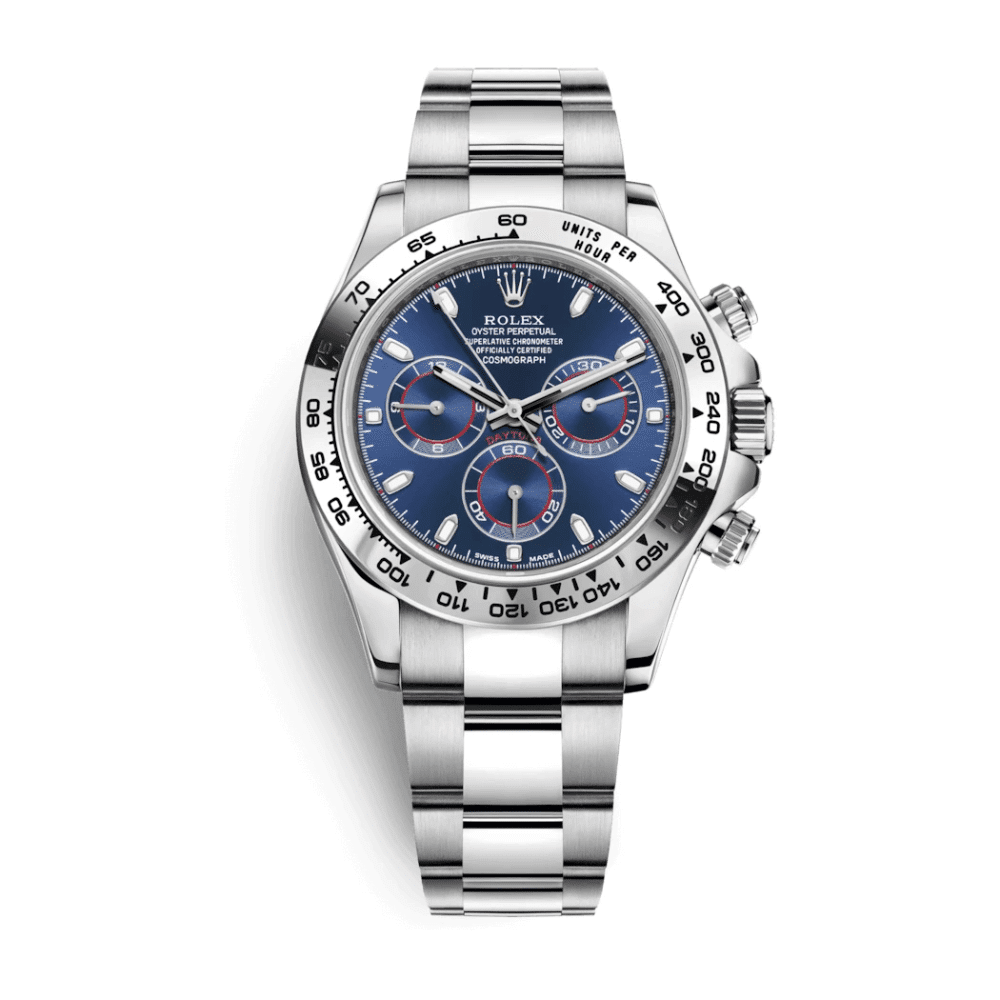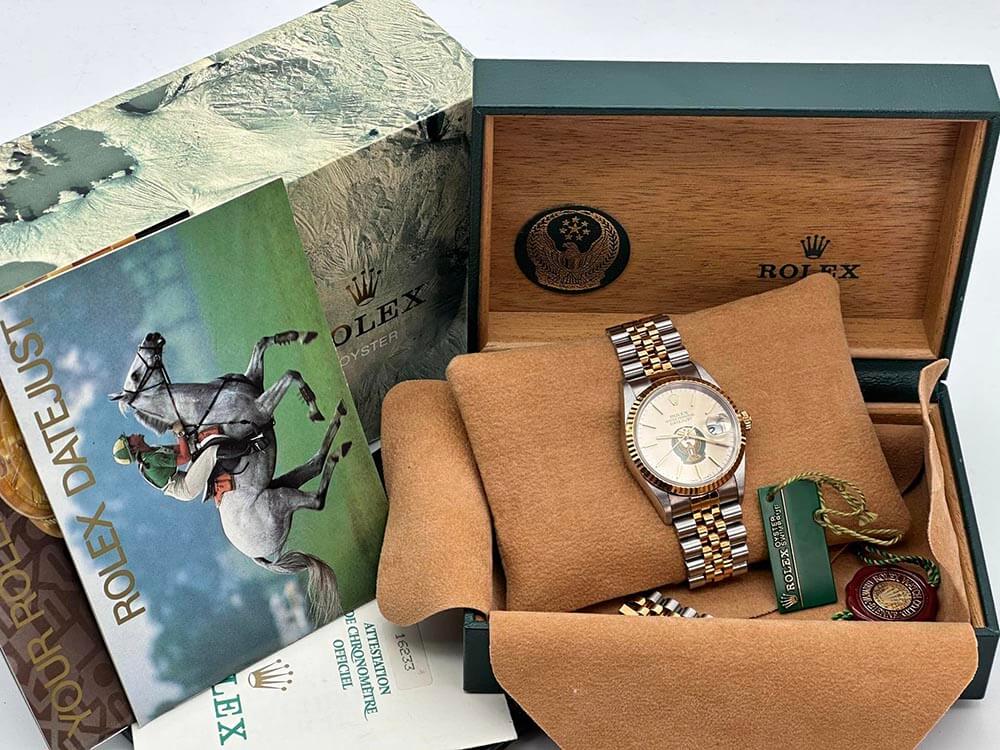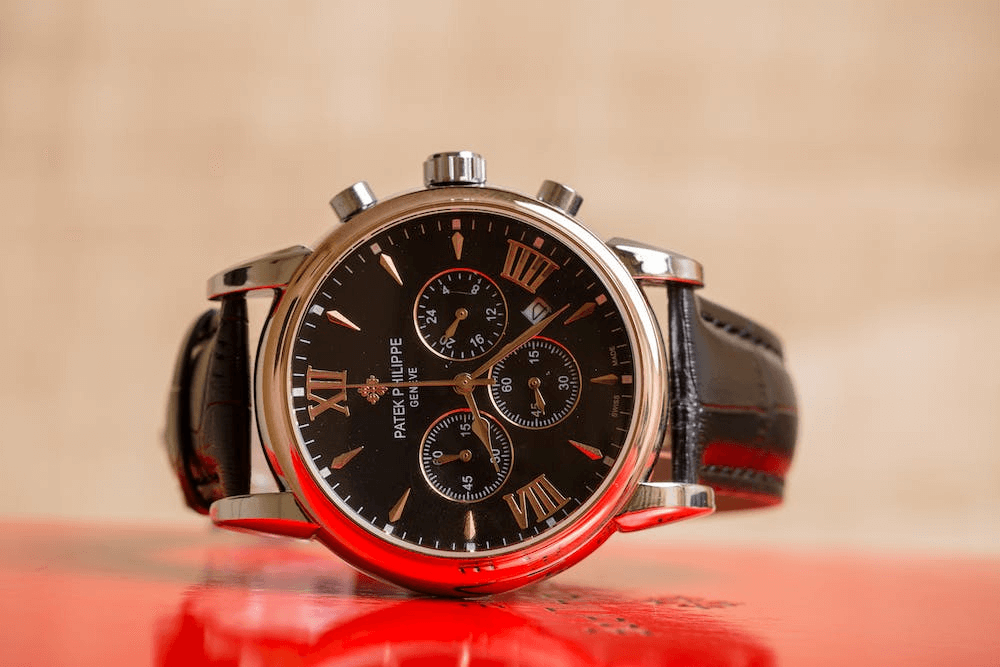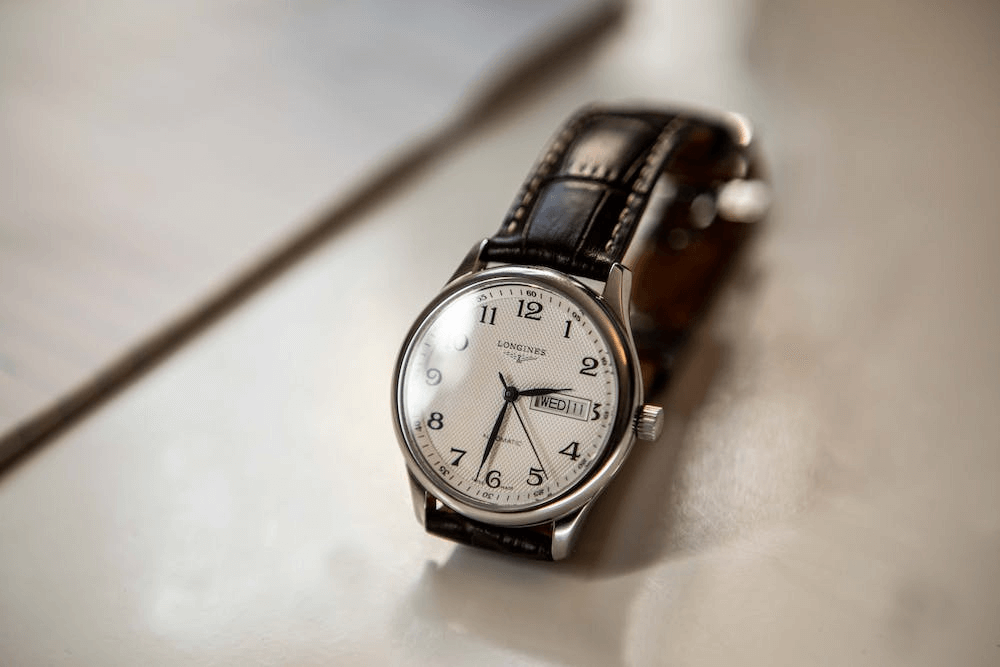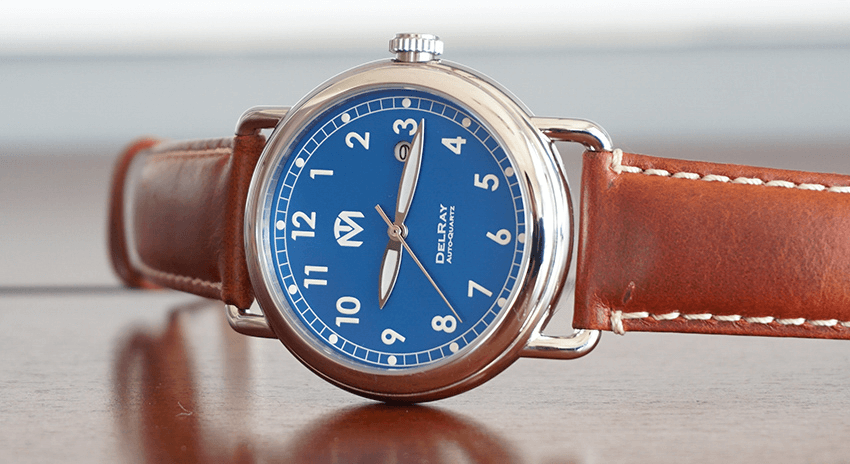To the World War II vet this may be a Hamilton, to the Vietnam vet it’s a plastic Benrus, and to the soldiers in the sandbox it’s anything from a Marathon to a Casio G-Shock. While many of the pieces are military specified, others are commercial watches favored by fighting men and women. What is a military specified timepiece? Essentially it’s a United States Defense standard, often called a military standard and abbreviated MIL-STD, MIL-SPEC or (informally) MilSpecs. These are used to help achieve standardization objectives by the U.S. Department of Defense. Standardization helps ensure that products meet certain requirements, commonality, reliability, total cost of ownership and compatibility with logistics systems. The military has been “specifying” equipment standards for well over a century. Virtually any company can make a product that conforms to published military specifications; however, there’s a difference between military spec and military issued. A military issued product is one that has been selected and awarded a contract for manufacture by the Department of Defense and becomes a line item on a government budget. Many commercially available watches conform to MIL-SPEC and may even appear in combat, but were never procured by the government. With MIL-PRF (Military Performance Specification), an off-the-shelf product that meets a performance requirement may find its way to the troops. As a result, today’s soldiers can purchase virtually any watch that meets these standards, essentially creating a marketing loophole that you can drive a tank through!
Pre -WWI watches
A cupped leather case for a pocket watch may actually be the first wristbased timekeeper to appear in combat. These began to show up in the middle 19th century; check your local European military history museum for examples. In the late 1870s a German naval officer was having trouble carrying out his duties with a watch clutched in one hand, so he attached it to his coat sleeve. One story holds that this resulted in the German admiralty awarding a contract to Girard-Perregaux of La Chaux-de-Fonds for the development of a watch to be worn on the wrist. Another story maintains that Germany’s Wilhelm I saw some experimental watches developed by Girard-Perregaux at the Berlin trade show and ordered up to 2,000 for the Imperial Navy. Wristwatches from Girard-Perregaux and other Swiss companies appeared during the Boer War (1898- 1902), thereby establishing a military precedent for a mechanism that, unlike a pocket watch, could be read without engaging a hand.
WWI soldiers
WWI really marked the emergence of the wristwatch as a piece of the military kit. Troops on all sides found it an encumbrance to unbutton a heavy coat to check pocket watches. These new wristwatches were typically 13- ligne with luminous numerals and hands, enameled dial , wire-strap lugs and fitted with protective grills. They were made by Girard-Perregaux, Movado, Waltham, Elgin, Solerex and Ingersoll and were referred to as “Soldier” watches in their ads to the general public. When the war ended and soldiers returned with horrific tales of trench warfare, they came to be known as Trench watches, with a more ornate covered variant referred to as a “hunter” watch, a pocket watch carryover that was also useful for the civilian sporting market. Waltham circa 1918 was indicitative of the watches of the era. It featured a porcelain dial, seven-jewel movement and a nickel case. It was in 1922, however, that the watch most associated with the Great War was developed by the house of Cartier: the flat 35 mm by 25 mm “Tank” watch. Its design paid homage to its name: the American tank corps and their work in World War I. The tank watch is today considered a timeless horological classic.
WWII Watches
In 1940 the U.S. Army released specification number 55-1B that would become the model for U.S. military wristwatches during World War II. The Army specified a movement of no less than seven jewels, a dial with luminescent hands and markers, a stainless steel case, olive drab strap, and a 90-day warranty. The watches were to have been accurate within +/- 30 seconds every day. It was to be “reasonably shock resistant and waterproof.” This model was designated the B-1 and featured a manual-wound movement. Primarily Bulova, Elgin, Hamilton and Waltham executed the B-1 watch for the Army, Army Air Corps, Russian Government, Royal Canadian Air Force, Navy and Marine Corps. As the war progressed, watches were called on for more than just telling time. They had become an integral part of troop deployments, operation synchronization and gunfire pinpointing. In 1943 specifications were issued by the Army for a navigation hack watch, designated the U.S. A.A.F A-11. The A-11 was more complicated than the B-1, beginning with specifications for a 15-jewel movement. This model was put through a program to meet certain standards of abuse tolerance and accuracy and was put out for contract with a much more detailed specification sheet. It represented the military’s acknowledgement that timekeeping was a critical element of modern warfare. The hack feature meant that the seconds hand jumps from one second mark to the next, rather than moving smoothly. This makes it more accurate to synchronize with other watches. Both black and white dial models were made, typically with a dull stainless steel and olive drab or black cotton band. The Navy’s formation of frogmen Naval Combat Demolition Units (NCDUs) in 1944 to clear mines from beaches during the D-Day invasion lead to the requirement for a watch that could withstand rough underwater duty. When it issued FSX-797 in 1944 the Navy set a new benchmark for technical specifications for a dust and moisture-proof watches that required submerged pressure testing. This spec resulted in the production of the Navy BuShips divers watch, featuring a stem cover attached with a small chain over the crown. It has a black dial with luminous numbers and hands and has markings for USN and BuShips on the dial and USN or USN BuShips on the back of the case (several styles). These models, made primarily by Elgin and Hamilton, came to be called the Navy Canteen military dive watch and is the most collectible of all U.S. WWII watches. Today, B-1 and A-11 watches are a popular collectibles, and many are available on auction and vintage watch websites. Expect to pay under $50 for a non-functioning B-1 and over $400 for a clean, working watch from a dealer. “Expect to pay more for any of these models from a reputable dealer, but you’ll also have his expertise standing behind the product,” offers Jeff Cohen of Green and Sons in Chicago. The best bet? “Local estate sales; there were so many made you’re bound to find a real example that has been handed down,” offers Candace of Candace’s Antiques and Collectables Estate Experts in Chicago. “I’ve actually sold working models for less than $50, but it’s strictly hit or miss.” The top of the collectible pack is the Navy Canteen watch. These can command $1,550 to $2,500 for a rough model and over $4,000 for a clean, working model. Quartz knockoffs are available for under $200.
Post -WWII and Korea
This period saw the emergence of more specialized timepieces, specifically for the Air Force and the Navy. The A-17 watch produced by Waltham was issued to U.S. Air Force pilots before and during the Korean War. It was similar to the World War II A-11 but with red luminous markings on the numbers and hands and a 24-hour dial. The Elgin and Hamilton canteen watches issued to the underwater demolition teams had outlived their usefulness by the 1950s. Winding of these watches lead to a reduction in their water resistance and they were not pressure proof beyond 49 feet. When the Navy re-defined the mission of these teams as a permanent part of the arsenal, it required deeper diving under more rigorous conditions, and it required a new watch to be sourced.
Onward to the ‘Nam
During the Korean War the mission of the UDT’s changed to more of a commando role, and the teams began to train with sophisticated underwater breathing apparatus (UBA), the use of advanced weapons and airborne insertion techniques. Additionally, the Army Special Forces SCUBA personnel, Army Rangers and CIA Maritime Units saw their roles expand. These new fighting groups required a watch that was pressure proof past 165 feet with elapsed time capabilities for tracking air, bottom time and decompression stops. Individually they purchased a vast array of watches that all bore similar characteristics: Black dial with luminous hands, rotating marked bezel, 17 or more jewels, automatic movement, stainless steel case, domed crystal, screw down crown, pressure proof to more than 330 feet. The following watches fit these specifications and could be found on soldiers within these U.S. military units: Benrus 7951/52, Blancpain 50 Fathoms, Doxa 300T, Rolex Oyster Perpetual and Submariner, Seiko DEO-95, Tudor Oyster Prince and Submariner and Zodiac‘s Sea Wolf. It was the Blancpain, however, that made the biggest impact. Specification 22716A (superseding several previous iterations) was issued in 1961 and set the standard for these “special forces” watches. It called for submersible (400-foot) nonmagnetic models with manual or automatic movements with many specifications for accuracy, pressure, construction, crystal, case thickness, and dial, even a paper moisture indicator. The first watch was developed by Allen V. Tornek of the Rayville factory, the sole representative of Blancpain in the U.S. The Tornek-Rayville TR900 has since become one of the most collectible military dive watches of all time. One thousand were made and an example recently sold for $16,000 at a Christie’s auction.
New and inexpensive
During the early years of military presence in Vietnam, the defense department began ramping up equipment acquisitions. The grunt in the field received the exact opposite of a Tornek-Rayville watch in the MILW-46374, which was introduced in 1964 as an inexpensive alternative to the MIL-W-3818B specification. Per the original documents: “This specification covers one type of plastic-cased wrist watch intended for use where a high degree of accuracy is not required. The watch is not intended to receive maintenance support within the military supply system.” It represented the DOD’s ultimate embrace of the concept of “disposable.” It was made by Benrus and can today be found for $99. Pilots were issued a GG-W-113 specification watch, produced by Benrus, Hamilton, and Waltham. These were made to a higher standard and featured a steel case, 24-hour markings on a black dial, manual-wind 17- jewel movements and a hack feature. The most sought after watch by Vietnam-era collectors is the Benrus Type I Class A Dive Watch, MIL-W- 50717, issued to Navy UDT teams and other special forces from the mid- 1970s forward. Its Rolex-like case measures 47.5 mm lug to lug, 42.4 mm across the crown, with thickness reaching 15.3 mm. It houses a 17-jewel automatic movement. Type II Class A and Type II Class B (which differed by having a 12/24 hour numerically indexed dial) were later developed for use by non-special ops Armed Forces. (These today fetch between $2,000 and $4,000 on Ebay, rivaling the price of a Rolex Submariner.) But if you’re in the market for this particular vintage, be wary. The Benrus Type 1 watches are being faked, says vintage watch specialist Derek Dier at watchestobuy. com. “If the price is ‘too good to be true’ it’s likely a fake or “Frankenstein” put together. The more desirable a watch becomes, the faster the Far East produces imitations. These watches are hot, buy with caution.” War often serves as a catalyst for innovation, explaining the paucity of watch specifications issued between the end of Vietnam, through the Cold War and up to 1991 when the U.S. began its Middle East activities. The basic DOD watch for this period was the Stocker and Yale SandY 184, featuring a non-hacking mechanical movement with tritium hands and markers, fiberglass/composite case, stainless steel bezel and flat mineral crystal. The level of tritium paint on these watches caused the military to cancel all contracts for this type of luminescent treatment, opening the door for a new technology: the gaseous tritium light source. This lead to MIL-W- 46374E (1989) that required a change from tritium luminous paint to gas luminescence. The specifications also updated the design of the dial and the hands and required an H3 mark plus the symbol for radioactivity. The standard MIL-W-46374F, issued in 1991, added a Type 6 Navigator watch. Stocker & Yale provided the P650 and P660 designs while Marathon Watch Company produced the Navigator 211. These rather nondescript watches featured plastic cases with a quartz hack movement and rotating bezels. The most interesting and recognizable watch of this period was the Stocker & Yale P650, standard issue to Army Rangers, Army Special Forces, the Navy SEALs (Sea, Air, Land), and the multi-service EOD (Explosives Ordnance Demolition) teams. To date there have been three rounds of P650s: 1995, 1999, and 2000. Stocker & Yale made 500 of these watches over and above their government contract, which also specifies they cannot be sold commercially in the U.S. (though they are available online). A civilian version of this watch is made by Luminox (USA) and Traser (UK). In the 1990s and into the 21st century, the U.S. military changed its specification parameters to the “performance standard” (based on results) and moved away from detailing things like case materials and appearance. This was the MIL-PRF- 46374G specification, and it opened the door for commercial watches to enter the government procurement game, theoretically providing watches at a lower cost and eliminating the need for expensive research and development. Several models, from navigation to dive, were purchased for the military.
Marathon Navigator is a utilitarian, composite-cased quartz watch available from online vendors for $135 to $175. A step up is the Marathon GSAR Dive Watch with an ETA 2824-A2 automatic movement with steel case (available online for $700 and up.)
Now in the field
Current military regulations allow decentralized watch purchases for U.S. ground forces. This means that individual units can buy watches for their personnel or can specify standards for private purchase. What this has done is (officially) allowed many different watches to appear on the wrists of field personnel. Nick North is a Retired SEAL from UDT 12 (1971) who currently works with the SEAL Special Warfare and Combat Craft. “In the 1970’s I was issued a Zodiac dive watch. We called it the ‘poor man’s oyster’ and it flooded,” he recalls. “Casio entered the market and I purchased one of their dive watches. Today, SEAL teams wear whatever they want; you’ll find everything from G Shocks to Oysters on their wrists. I see a lot of guys wearing Luminox today.”
Luminox
The Luminox 3050 is based on the Mil Spec MIL-W-46374F that produced the Stocker and Yale P650. These watches are available on military bases and are often selected by soldiers for their personal use. Some models go beyond mil spec, offering features like chronometers. Luminox watches have been procured by the likes of SEAL teams as well as several groups of USAF pilots.
Reactor
One hot new watch that has already captured the attention of several military units is the Reactor Trident. The Trident features the firm’s own Never Dark dial illumination technology, which it says combines the brightness of SuperLuminova with the multi-year longevity of tritium. A ten-year battery and robust case have lead to rave reviews from troops. Reactor reciprocated by sponsoring Operation Catch Fish 2009, a fishing competition designed to boost morale in the Middle East (see accompanying story).
Rogue Warrior Watch Company Red Cell
Developed with input from SEAL Team commander Richard Marcinko, Rogue Warrior is a new brand of military tough timepieces. “I wanted the watch to be both usable and affordable for the serviceman,” says Marcinko, who adds that the first shipment of these watches sold out in just days. One model, the Red Cell, is a tough- looking customer with its movement protected by d30, a flexible nano material that turns rock hard on impact. The watch is filled with Krypton gas, effectively removing all moisture from the case, eliminating the possibility of condensation through temperature change, and enhancing the luminosity of its SuperLuminova markers.
Special Ops Strykers
The MTM Special Ops Stryker is a new entry into the military/police watch field that is sure to find its way onto wrists in combat. It’s a solid chunk of 316L stainless steel with black PVD plating. What makes this product unique are its dual movements: Swiss analogue and a multi function digital display. It tracks multiple global time zones, has an alarm, timer and electroluminescent backlighting. It is water resistant to 660 feet with a sapphire crystal.


